I remember the time I hosted a steakout fundraiser for a local charity, and I wanted to serve a fantastic side dish alongside the main course. That’s when a fellow home cook shared their secret method and recipe for baking 50 potatoes in a roaster oven, which turned out to be a huge hit at the event.
To bake 50 potatoes in a roaster oven, start by washing and seasoning each potato generously. Preheat your roaster oven to 400°F (204°C). Distribute the potatoes evenly within the oven, and let them cook for about 1 hour and 15 minutes, or until they achieve an internal temperature of 210°F (99°C).
This comprehensive guide will reveal the secrets behind baking 50 potatoes in a roaster oven, featuring invaluable tips, expert insights, and a detailed, step-by-step process that will help you create perfectly cooked, scrumptious potatoes to enhance any meal or special occasion.
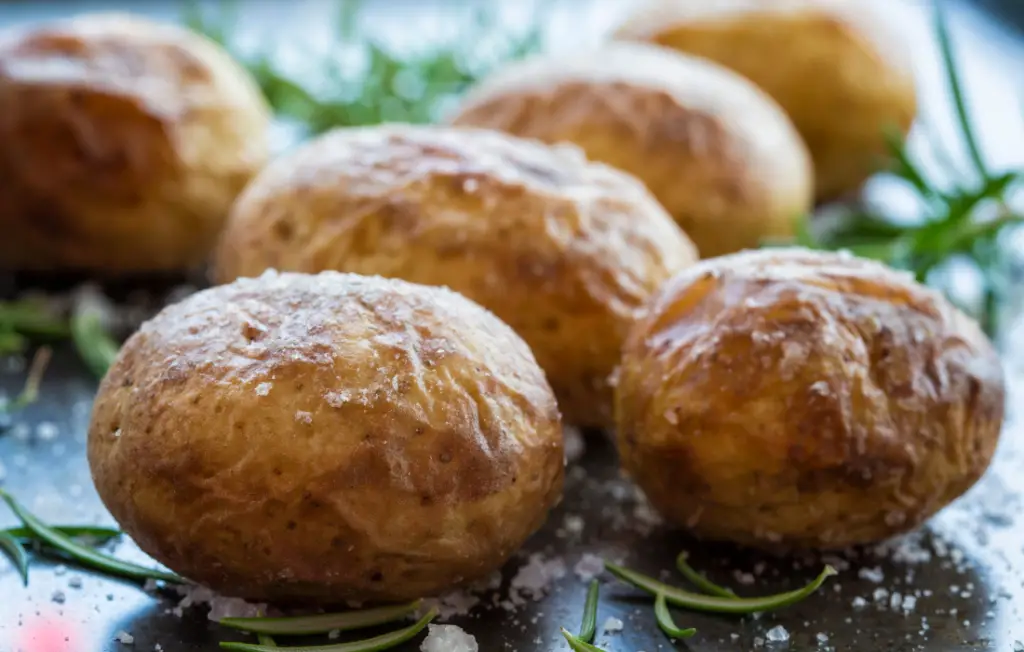
- Choosing the Right Roaster Oven
- Best Roaster Oven for Large-Scale Cooking
- Roaster Oven vs. Convection Oven
- Preparing Your Potatoes for Baking
- Baking Potatoes in a Roaster Oven
- Expert Insights: Tips and Advice from Professional Caterers
- Troubleshooting Tips: Ensuring Perfectly Baked Potatoes
- Dietary Adaptations: Making Your Baked Potatoes Healthier
- Frequently Asked Questions
- Conclusion
Choosing the Right Roaster Oven
Choosing the right roaster oven is crucial for baking 50 potatoes simultaneously. Key factors include capacity to accommodate all the potatoes, adjustable temperature control for precise cooking, energy efficiency to save on electricity, portability for easy transport to events, durability for long-term use, ease of cleaning with removable inserts, and overall value for your budget. Here are some other key factors:
- Capacity: Ensure that the roaster oven has sufficient space to accommodate the number of potatoes or other items you plan to cook at once.
- Temperature Control: Look for a roaster oven with adjustable temperature settings, allowing you to achieve the perfect cooking conditions for various dishes.
- Energy Efficiency: Opt for an energy-efficient roaster oven, which will not only save you money on electricity bills but also reduce your carbon footprint.
- Portability: If you plan to use the roaster oven for events or gatherings outside your home, choose a model that is easy to transport and set up.
- Durability: Select a roaster oven made from high-quality materials that can withstand frequent use and high temperatures.
- Easy to Clean: Choose a roaster oven with a removable cooking insert or non-stick surface, making it easier to clean after use.
- Price: Determine your budget and compare the features of various roaster ovens within your price range to find the best value for your money.
Best Roaster Oven for Large-Scale Cooking
For large-scale cooking, the Hamilton Beach 22-Quart Roaster Oven stands out with its ample capacity, able to bake up to 50 potatoes or roast a whole turkey. Its features include a removable enamel-on-steel roasting pan, adjustable temperature control, and an energy-efficient design, making it an ideal choice for big gatherings and efficient cooking
Pros:
- Large capacity: Ideal for cooking large batches of food, such as baking 50 potatoes or roasting a whole turkey.
- Adjustable temperature control: Provides flexibility for various cooking tasks.
- Easy to clean: The removable enamel-on-steel roasting pan and lift-out wire rack make cleaning a breeze.
- Energy-efficient: Consumes less energy compared to a traditional oven, making it an eco-friendly choice.
- Portable: Can be easily transported and set up for events or gatherings.
- Durable: Made from high-quality materials, ensuring long-lasting use.
Cons:
- Limited cooking functions: Lacks some advanced features found in more expensive models, such as convection or rotisserie options.
- Size: Due to its large capacity, it can take up significant counter space, making it less suitable for small kitchens.
- Exterior heat: The exterior can become hot during use, requiring caution when handling or positioning the oven.
- Learning curve: Adjusting cooking times and temperatures may take some practice compared to using a traditional oven.
Roaster Oven vs. Convection Oven
Deciding between a roaster oven and a convection oven depends on your cooking needs. Roaster ovens offer large capacity and energy efficiency, perfect for big batches like 50 potatoes, while convection ovens provide precise temperature control and faster cooking times due to fan-assisted heat circulation. Evaluate your specific requirements to choose the best appliance for your kitchen.:
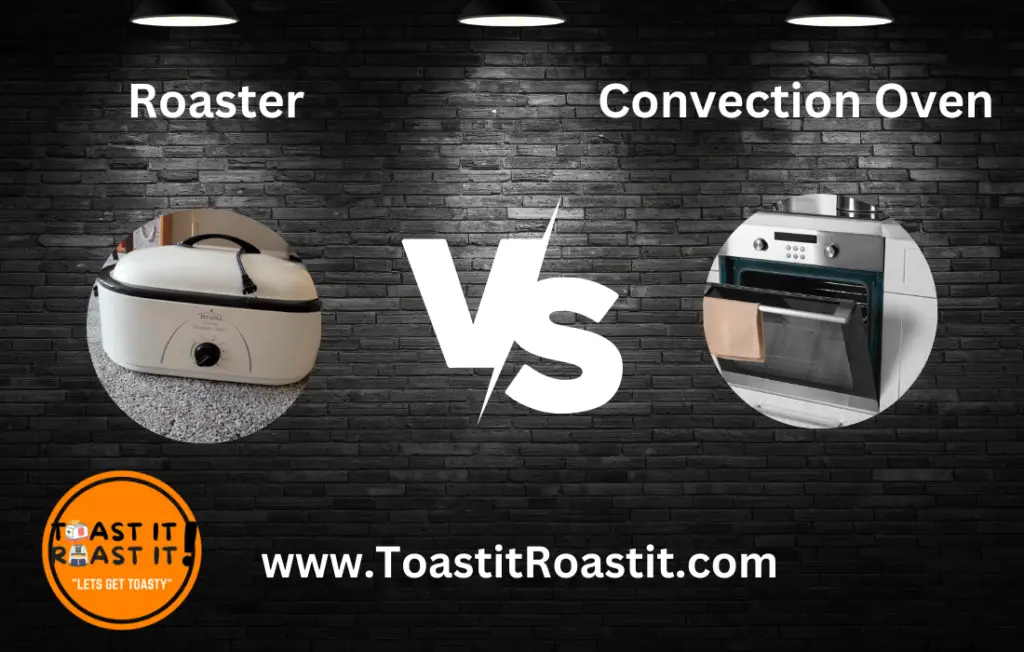
| Feature | Roaster Oven | Convection Oven |
|---|---|---|
| Capacity | Large capacity, perfect for big batches | Smaller capacity, better for smaller batches |
| Temperature Control | Adjustable temperature control | Precise temperature control with fan-assisted circulation |
| Cooking Time | Slightly longer cooking time | Faster cooking due to circulated hot air |
| Energy Efficiency | Generally more energy-efficient | Less energy-efficient compared to roaster ovens |
| Portability | Easily portable and perfect for events | Less portable, typically built into kitchen spaces |
| Cost | Budget-friendly option | Typically more expensive than roaster ovens |
By considering these factors and comparing the features of a roaster oven and a convection oven, you can make the best choice for your large-scale potato baking needs.
Preparing Your Potatoes for Baking
Preparation is key for perfectly baked potatoes. Start by selecting high-starch M & S potatoes or russet potatoes for their fluffy interiors and crispy skins. Thoroughly clean and scrub each potato, prick them with a fork to allow steam to escape, and season with oil and your favorite spices for flavorful, crispy skins..
M & S Potatoes: The Perfect Choice for Baking
When it comes to baking potatoes, not all spuds are created equal. The ideal potato for baking should have a high starch content and a thick skin, making M & S Potatoes (or russet potatoes) the perfect choice. Their fluffy interior and crispy skin will leave your guests reaching for seconds.
Cleaning and Scrubbing Potatoes
No one likes a dirty potato. Show your potatoes some love by giving them a thorough scrub under running water to remove any dirt or debris. Use a vegetable brush if needed, but remember, we’re cleaning potatoes, not scrubbing the deck of a pirate ship—be gentle.
Pricking Potatoes for Even Cooking
To avoid a spud-tastrophe, prick your potatoes a few times with a fork before baking. This allows steam to escape and ensures even cooking. No need to go overboard, though—just a few jabs will do the trick.
Seasoning and Oiling for Crispy, Flavorful Skins
Give your potatoes a beauty treatment by massaging them with a bit of oil (olive oil or vegetable oil works wonders) and sprinkling them with your favorite seasoning (kosher salt, garlic powder, or even some rosemary for a touch of sophistication). This spa treatment not only helps your potatoes achieve a beautiful, crispy skin, but also adds a burst of flavor that will have your guests singing your praises.
Baking Potatoes in a Roaster Oven
With your potatoes prepped, it’s time to bake them in the roaster oven. Ensure the oven is preheated to 400°F (204°C). Place the potatoes on a wire rack inside the oven, allowing space for heat circulation. Bake for 1 to 1.5 hours, checking for doneness with a fork.
Preheating the Roaster Oven
Preheat your roaster oven to 400°F (204°C) for about 15 minutes to ensure an even cooking environment. A properly preheated oven is key to achieving crispy skins and a tender interior..
Cooking Temperature and Time
Once your roaster oven is preheated, place the prepared potatoes on the wire rack, leaving some space between each potato for proper heat circulation. Close the lid and set the temperature to 400°F (204°C). The potatoes will need approximately 1 to 1.5 hours to bake, depending on their size. To check for doneness, insert a fork or knife into a potato; it should slide in easily, indicating the interior is cooked through.
Uniform Cooking for a Perfect Batch
Rotate and rearrange the potatoes halfway through baking to ensure uniform cooking. This promotes even heat distribution, preventing any potatoes from being undercooked or overcooked. Enjoy your perfectly baked potatoes, courtesy of your trusty roaster oven!
Print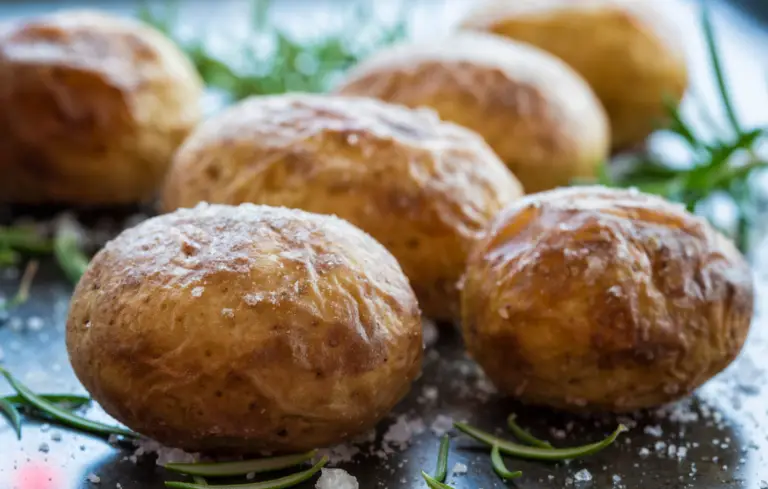
Easy Roaster Baked Potatoes for 50 Recipe
This Effortless Roaster Oven Baked Potatoes recipe is perfect for serving a crowd of 50, creating deliciously crispy-skinned and fluffy potatoes with minimal effort.
- Total Time: 1 hour 50 minutes
- Yield: 50 servings 1x
Ingredients
- 50 medium-sized M & S (russet) potatoes
- Olive oil or vegetable oil for coating
- Seasoning of choice (kosher salt, garlic powder, rosemary, etc.)
Instructions
- Preheat your roaster oven to 400°F (204°C) for 15 minutes.
- Clean and scrub the potatoes, removing any dirt or debris.
- Prick each potato a few times with a fork for even cooking.
- Coat each potato with a thin layer of oil and season to taste.
- Place the prepared potatoes on the wire rack in the roaster oven, leaving space between each potato.
- Bake for 1 to 1.5 hours, rotating and rearranging the potatoes halfway through cooking.
- Check for doneness by inserting a fork or knife into a potato; it should slide in easily.
- Allow the potatoes to cool for a few minutes before serving.
Notes
Customize your potatoes with your favorite toppings, such as sour cream, chives, cheese, or bacon bits.
- Prep Time: 20 minutes
- Cook Time: 1 hour 30 minutes
- Category: Side Dish
- Method: Baking
- Cuisine: American
- Diet: Vegetarian
Nutrition
- Serving Size: 1 medium-sized baked potato
- Calories: 168
- Sugar: 1.2g
- Sodium: 7mg
- Fat: 0.2g
- Saturated Fat: 0.1g
- Unsaturated Fat: 0.1g
- Trans Fat: 0 g
- Carbohydrates: 37g
- Fiber: 4g
- Protein: 4.6g
- Cholesterol: 0mg
Expert Insights: Tips and Advice from Professional Caterers
Professional caterers share valuable tips for large-scale potato baking. Use energy-efficient cooking techniques, understand the subtle differences between roasting and baking, and experiment with unique seasoning blends like Cajun or lemon-herb to elevate your baked potatoes.
Energy-efficient Cooking Techniques
When you’re cooking for a crowd, energy efficiency is essential. Caterers recommend using a roaster oven for large-scale potato baking, as it uses less energy compared to conventional ovens. Additionally, baking multiple potatoes at once maximizes energy usage, making the cooking process more eco-friendly.
Roasting vs Baking Potatoes
While the terms “roasting” and “baking” are often used interchangeably, there’s a slight difference between the two methods. Roasting typically involves higher temperatures and open-air cooking, while baking uses lower temperatures and enclosed cooking environments. However, in the case of potatoes, both methods yield similar results: crispy skins and fluffy interiors. Caterers suggest choosing the method that best suits your equipment and personal preferences.
Unique Seasoning Ideas
Adding unique seasonings can take your baked potatoes from ordinary to extraordinary. Caterers often experiment with different flavor combinations to create signature dishes. Here are some creative seasoning ideas to try:
- Cajun seasoning: Add a kick to your potatoes with a spicy blend of cayenne pepper, paprika, garlic powder, onion powder, and dried herbs.
- Lemon-herb seasoning: Combine lemon zest, thyme, rosemary, and garlic for a zesty and aromatic twist on your classic baked potato.
- Smoky barbecue seasoning: Mix smoked paprika, brown sugar, chili powder, and garlic powder for a sweet and savory flavor that pairs well with grilled meats.
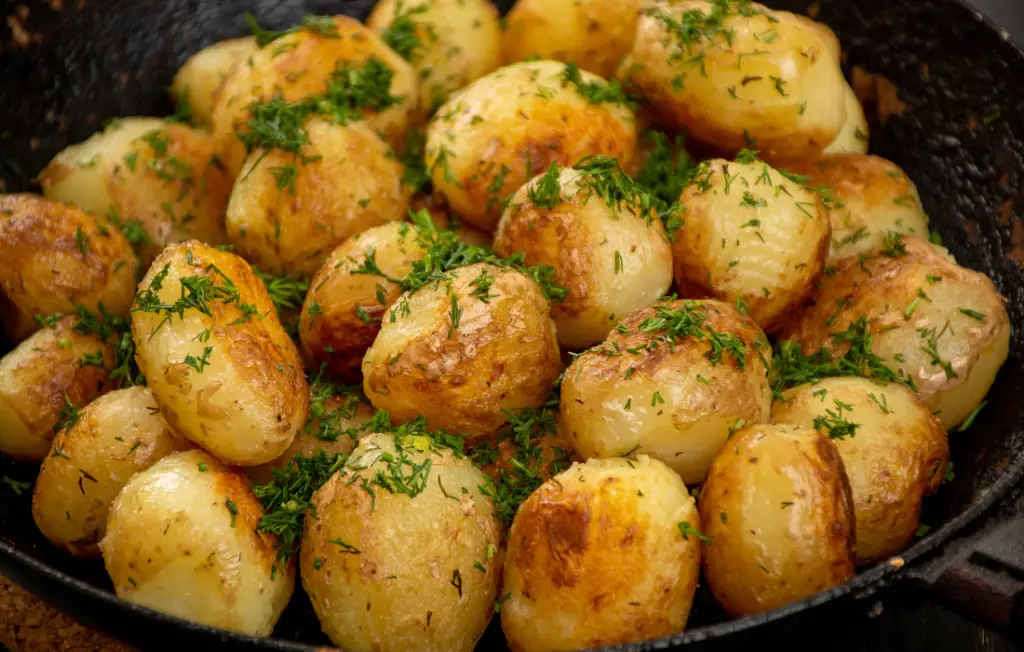
Feel free to get creative and mix up your own unique seasoning blends. Your guests will appreciate the extra effort and personalized touch!
Troubleshooting Tips: Ensuring Perfectly Baked Potatoes
Even the best-laid plans can sometimes go awry, but these troubleshooting tips will help you avoid common baked potato pitfalls and achieve spud-tacular results every time!
Poking Holes in Potatoes: Why It’s Important
Did you know potatoes can explode if they aren’t properly prepared for baking? To avoid a potato-pocalypse, poke holes in each potato with a fork before baking. This allows steam to escape, preventing a build-up of pressure that could lead to a messy explosion.
Testing Potato Doneness with a Food Thermometer
Forget the guesswork! A food thermometer is your secret weapon for perfectly cooked potatoes. Insert the thermometer into the center of a potato, aiming for a temperature of 210°F (99°C) to ensure a tender, fluffy interior.
How to Achieve Crispy Potato Skins
Crispy skins are the hallmark of a well-baked potato, and achieving them is easier than you think! Simply coat your potatoes in oil and seasonings before baking, and voilà: delicious, crispy-skinned spuds that’ll have your guests coming back for seconds (and thirds).
Dietary Adaptations: Making Your Baked Potatoes Healthier
Accommodating various dietary needs is a breeze with these simple adaptations that’ll keep your baked potatoes delicious, healthy, and inclusive.
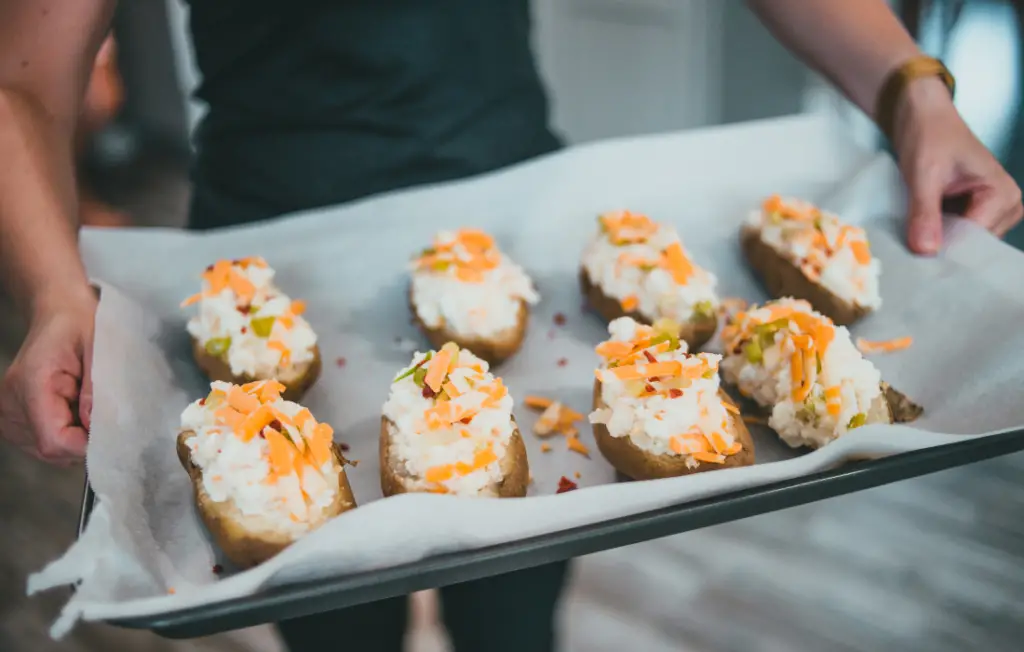
Baking Potatoes without Foil
Ditch the foil for a more eco-friendly and healthier potato baking method. Baking without foil allows potatoes to develop a crispy skin, while also reducing waste and aluminum exposure.
Low-fat Toppings and Serving Suggestions
Traditional baked potato toppings can be heavy on calories and fat. Opt for healthier alternatives like Greek yogurt, salsa, steamed veggies, or a sprinkle of your favorite herbs for a guilt-free indulgence.
Gluten-free and Vegan Options
Baked potatoes are naturally gluten-free, making them a great choice for guests with dietary restrictions. For vegan diners, swap out traditional butter and sour cream with plant-based alternatives like vegan butter, dairy-free sour cream, or creamy avocado. Everyone can enjoy these versatile and delicious spuds!
Frequently Asked Questions
Let’s tackle some common questions about baking potatoes in a roaster oven, so you can confidently impress your guests with your newfound potato prowess!
How do I choose the right potatoes for baking?
When selecting potatoes for baking, opt for starchy varieties like Russet or Idaho, as they have a high-starch content that yields a fluffy interior. Look for potatoes that are firm, free of blemishes or sprouts, and have an even, brown skin. Remember, it’s what’s on the outside that counts… in this case, anyway!
Can I use a slow cooker instead of a roaster oven?
Yes, you can! While a roaster oven is ideal for baking large quantities of potatoes quickly, a slow cooker can also get the job done with a bit more patience. To use a slow cooker, simply wash, prick, and season your potatoes as you would for roaster oven baking, then place them in a single layer on the bottom of the slow cooker. Cook on high for 4-5 hours, or until tender. Keep in mind that slow-cooked potatoes may have a softer skin compared to those baked in a roaster oven.
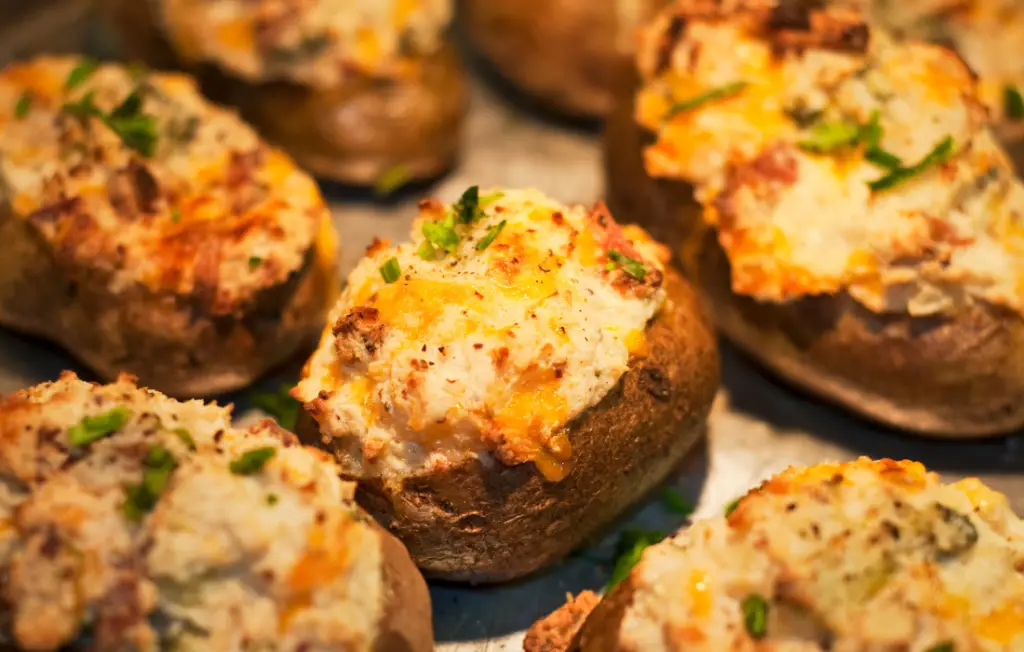
What’s the ideal serving size for baked potatoes?
The perfect serving size for baked potatoes depends on your guests’ appetites and the variety of side dishes you’re offering. As a general rule, plan for one medium-sized potato per person. However, if you’re serving a carb-loving crowd or offering a baked potato bar with various toppings, you may want to prepare a few extra spuds to ensure no one goes home hungry. After all, there’s no such thing as too much potato!
Conclusion
And there you have it! Baking 50 potatoes in a roaster oven has never been easier or more delicious. With these expert tips and advice, you’re now equipped to tackle large-scale potato baking like a pro, whether it’s for a fundraiser, a family gathering, or any other special event.
Remember to choose the right potatoes, follow the preparation and cooking steps carefully, and experiment with unique seasonings and toppings to create a memorable dining experience. So go ahead and break out that roaster oven, it’s time to make some mouthwatering, crowd-pleasing baked potatoes!

